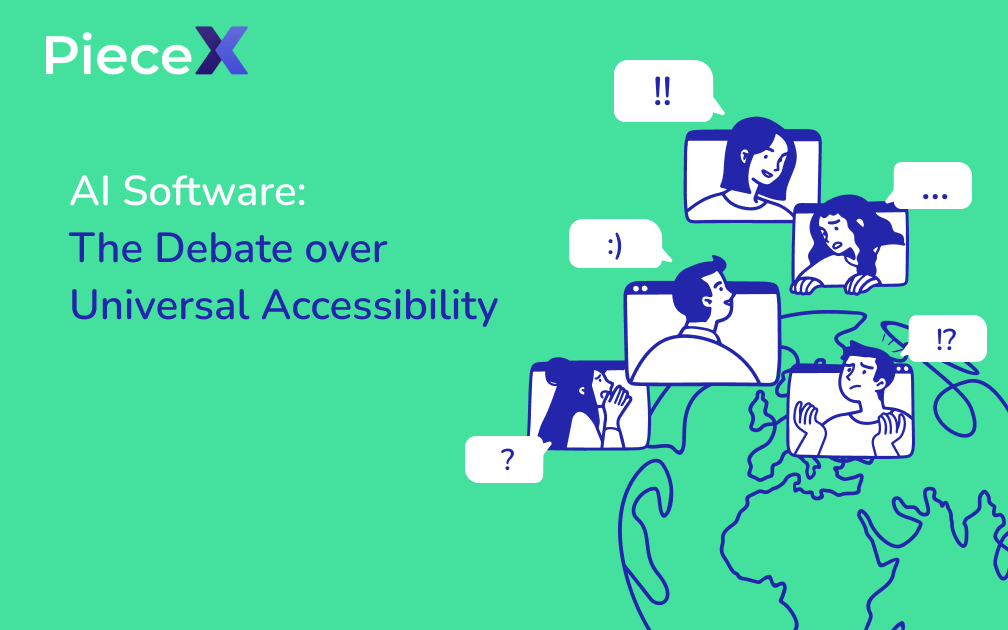
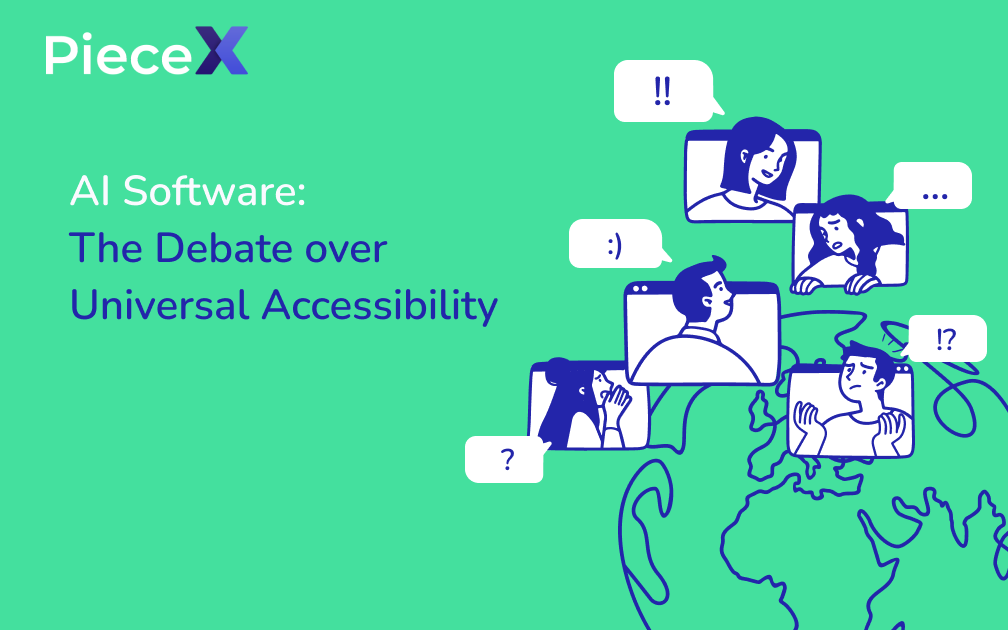
Artificial Intelligence (AI) has emerged as a transformative force in the modern world, reshaping industries, economies, and societies. As AI technology becomes more prevalent, a crucial question arises: should AI software be available to everyone? This article delves into the pros and cons of universal access to AI software, exploring its potential advantages, challenges, perspectives on regulation, addressing biases, and the future of AI accessibility.
AI software refers to computer programs and algorithms that enable machines to perform tasks that typically require human intelligence. These tasks can include problem-solving, decision-making, language processing, image recognition, and much more. AI technology ranges from simple rule-based systems to sophisticated neural networks that learn from vast datasets.
The Advantages of Universal AI Software Accessibility
A. Democratizing Technology: Bridging the Digital Divide
Universal access to AI software can help bridge the digital divide by providing equitable opportunities to individuals and communities with limited access to advanced technologies. By making AI tools and resources accessible, underserved regions can leapfrog into the digital era, improving education, healthcare, and economic prospects.
B. Fostering Innovation and Creativity
When AI software becomes widely available, it empowers innovators and entrepreneurs from diverse backgrounds to experiment and create groundbreaking applications. Lowering barriers to entry encourages a broader range of ideas, leading to innovative solutions for global challenges.
C. Empowering Individuals and Small Businesses
Universal AI access offers individual users and small businesses the ability to harness AI technology to enhance productivity and decision-making. From automating repetitive tasks to personalized marketing, AI tools can level the playing field and boost efficiency for enterprises of all sizes.
D. Potential for Societal Transformation and Problem Solving
Universal AI software can accelerate research and problem-solving efforts in various fields, such as healthcare, climate change, and disaster response. AI-powered analysis of vast datasets allows for better understanding and more effective solutions to complex issues.
IThe Challenges of Universal AI Software Accessibility
A. Ethical Concerns: AI Misuse and Weaponization
Universal access to AI software raises concerns about potential misuse, including the development of autonomous weapons, deepfake technology, and AI-generated misinformation. Addressing ethical issues becomes paramount to ensure that AI is used responsibly and does not harm humanity.
B. Security Risks and Data Privacy Issues
Widespread availability of AI software also heightens security risks, as cybercriminals may exploit AI algorithms to breach sensitive systems. Additionally, AI applications often require access to vast amounts of personal data, posing significant privacy challenges that demand stringent safeguards.
C. Widening Socioeconomic Disparities
While universal AI access has the potential to narrow disparities, it can also exacerbate existing inequalities. Those with limited resources or education may struggle to fully utilize AI technology, creating a new form of digital divide based on AI literacy.
D. Impact on Employment and Labor Market
The widespread adoption of AI could disrupt industries and displace certain jobs. While AI has the potential to create new employment opportunities, there is a need for measures to retrain and reskill workers affected by automation.
Perspectives on Regulation and Control
A. Striking a Balance: Ensuring Responsible AI Use
Striking a balance between open access and responsible use is essential. Governments and organizations must implement regulations that promote ethical AI development and usage while encouraging innovation and access.
B. Importance of Ethical Guidelines and Standards
Establishing clear ethical guidelines and standards for AI development and deployment is crucial. This can help prevent AI systems from being used for malicious purposes and ensure they align with societal values.
C. Collaboration between Governments, Corporations, and Civil Society
Addressing the challenges of universal AI access requires collaboration between governments, corporations, and civil society. Open dialogue and cooperation can lead to more comprehensive and effective AI policies.
D. AI Software Licensing and Open-Source Alternatives
Exploring various licensing models, such as open-source AI software, can foster a collaborative environment, encouraging developers worldwide to contribute to AI advancement.
Addressing AI Bias and Fairness
A. Understanding Bias in AI Algorithms
AI algorithms can perpetuate existing biases present in training data, leading to unfair or discriminatory outcomes. Recognizing and understanding these biases is crucial in addressing them effectively.
B. Mitigation Strategies and Algorithmic Transparency
Developing strategies to mitigate AI bias and ensuring algorithmic transparency can help build trust in AI systems and promote fairness in their application.
C. Promoting Diversity in AI Development
Diverse perspectives in AI development teams can lead to more inclusive and unbiased AI technologies. Encouraging diversity in the AI field is essential for creating ethical and accessible AI solutions.
The Future of AI Accessibility: Limitations and Possibilities
A. Assessing Technological Readiness and Infrastructure
The universal accessibility of AI software depends on technological readiness and infrastructure. Improving internet connectivity and computing capabilities in underserved areas is crucial for equitable access.
B. Forecasting AI Development and Adoption
Anticipating the future growth of AI technology and its applications can inform policymakers and stakeholders to make informed decisions.
C. AI in Education and Raising AI Awareness
Promoting AI education and awareness is vital for preparing individuals to use AI responsibly and understand its societal impact.
Conclusion
AI software’s universal accessibility presents both promise and challenges. It can democratize technology, fuel innovation, and transform societies. However, ethical concerns, data privacy issues, and potential socioeconomic disparities demand careful regulation and responsible AI use. By addressing AI bias, fostering collaboration, and promoting inclusive development, we can shape a future where AI benefits all of humanity. The role of governments, corporations, and individuals in ensuring inclusive AI development is critical, as we navigate the debate over universal AI accessibility and chart a path towards a more equitable AI-powered world.
For more articles such as this, make sure to visit the PieceX Knowledgebase Blog.
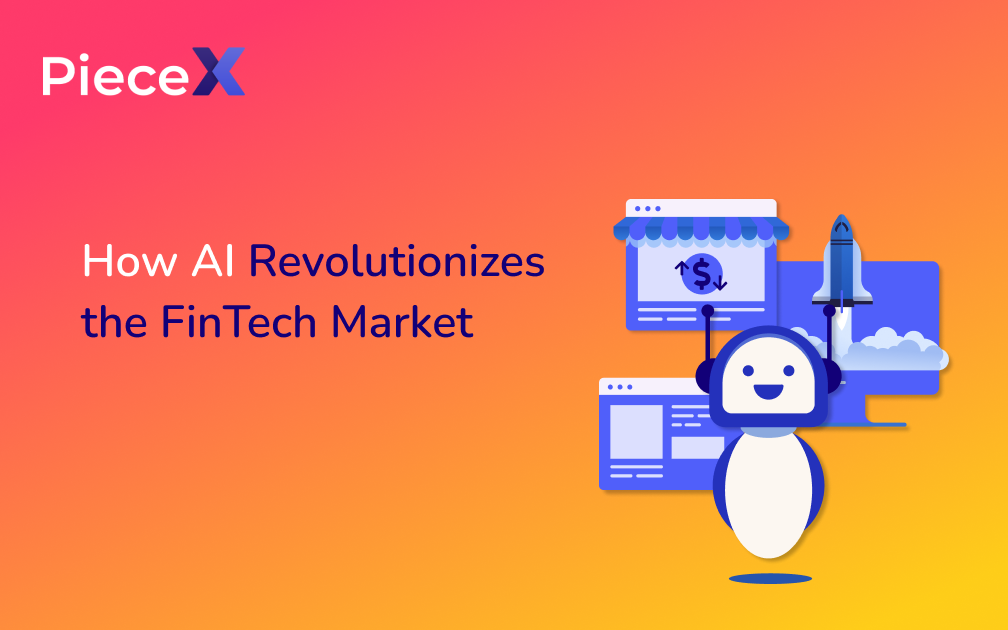
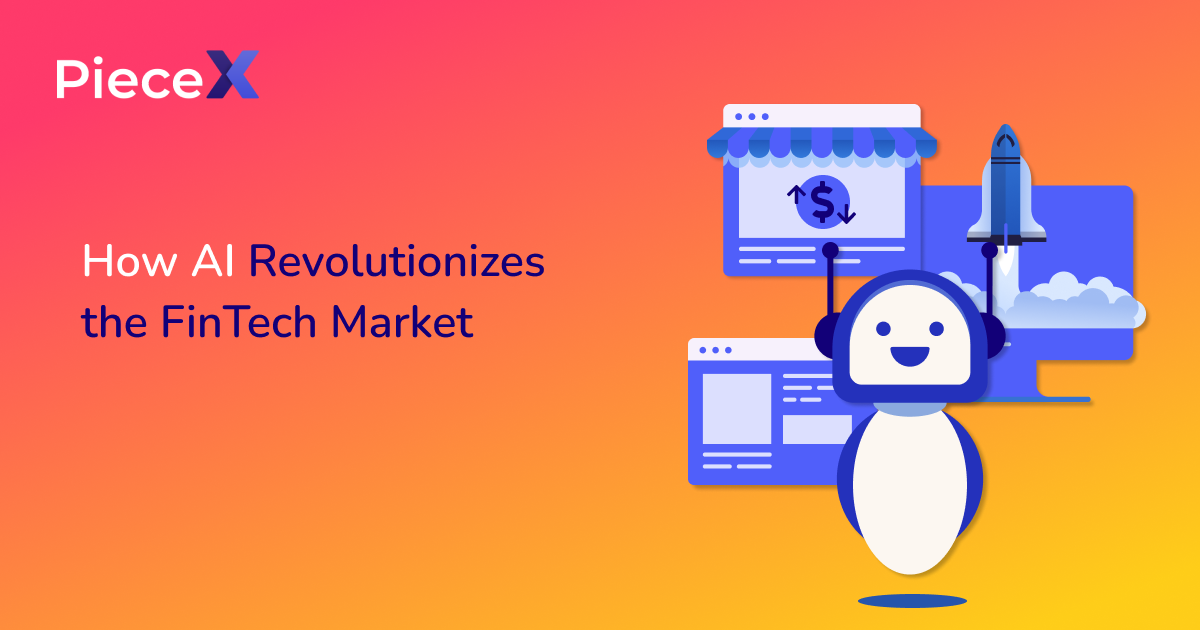
Artificial Intelligence (AI) and Financial Technology (FinTech) are two cutting-edge concepts that have revolutionized the finance market.
AI refers to the development of computer systems capable of performing tasks that typically require human intelligence, while FinTech encompasses the use of technology to enhance financial services. Together, they have transformed the way financial processes are conducted, leading to increased efficiency and personalized experiences for customers.
In this article, we will explore the role of AI in FinTech, its applications in the finance market, the benefits and challenges it brings, and future trends to anticipate.
The Role of AI in FinTech
AI plays a pivotal role in FinTech by automating and streamlining financial processes, providing personalized customer experiences, and leveraging data analysis and predictive modeling.
Firstly, AI-driven automation has significantly enhanced efficiency in financial processes. Tasks such as transaction processing, risk assessment, and fraud detection can now be executed seamlessly, reducing human error and saving time.
Additionally, AI enables personalized customer experiences by offering customized financial recommendations and employing AI-powered chatbots and virtual assistants to assist customers in their financial endeavors.
Finally, AI’s prowess in data analysis and predictive modeling allows financial institutions to harness big data for insights and make informed investment decisions.
The role of AI in Fintech is to find application in various areas within the finance market. Algorithmic trading, for instance, relies on AI algorithms to execute automated trading strategies and perform real-time market analysis.
This approach enables faster and more accurate trading decisions, minimizing human bias and emotion. Robo-advisors are another prominent AI application in FinTech. These digital platforms offer automated investment advice based on personalized goals and risk tolerance, while AI algorithms manage portfolios efficiently.
Furthermore, AI-powered credit scoring systems have improved credit risk assessment and streamlined loan approval processes, ensuring quicker and fairer evaluations for borrowers.
Benefits and Challenges of AI in FinTech
Benefits of AI in FinTech
The integration of AI in FinTech brings numerous benefits. Firstly, it enhances efficiency and reduces costs by automating time-consuming tasks and eliminating human errors.
This increased efficiency also translates into quicker service delivery, improving customer satisfaction. Secondly, AI improves accuracy and risk management through sophisticated algorithms capable of analyzing vast amounts of data and identifying patterns that humans may overlook.
Finally, AI-driven FinTech solutions provide customers with personalized experiences, tailoring financial recommendations and services to their specific needs.
Challenges of AI in FinTech
However, AI in FinTech is not without its challenges. Ethical considerations and bias in AI algorithms pose significant concerns. Algorithms must be designed with fairness, transparency, and accountability in mind to avoid perpetuating existing biases. Data privacy and security are also critical issues as AI relies on vast amounts of sensitive customer data.
Financial institutions must prioritize protecting this data from unauthorized access and ensure compliance with regulations such as GDPR.
Additionally, regulatory and compliance issues arise as AI applications challenge existing legal frameworks, requiring careful evaluation and adaptation.
Future Trends in AI and FinTech
Looking ahead, the Future of AI and FinTech is promising. One emerging trend is the rise of AI-powered source code marketplaces. Platforms like PieceX connect finance corporations with FinTech solutions on their marketplace using AI algorithms.
These marketplaces simplify the process of finding and implementing cutting-edge FinTech solutions, driving innovation and collaboration in the industry.
Conclusion
In conclusion, the marriage of AI and FinTech has brought about a revolution in the finance market. Through automation, personalized experiences, and data analysis, AI has streamlined financial processes, empowered customers, and improved decision-making.
The role of AI in FinTech includes increased efficiency, enhanced accuracy, and improved customer satisfaction. By fostering responsible AI adoption, we can harness the full potential of these technologies to create a more efficient, inclusive, and customer-centric financial ecosystem.
As we embark on this journey, let us embrace the transformative power of AI while ensuring that it aligns with our values and serves the best interests of individuals and society as a whole.
For more articles like this, make sure to check out our Knowledgebase Blog.
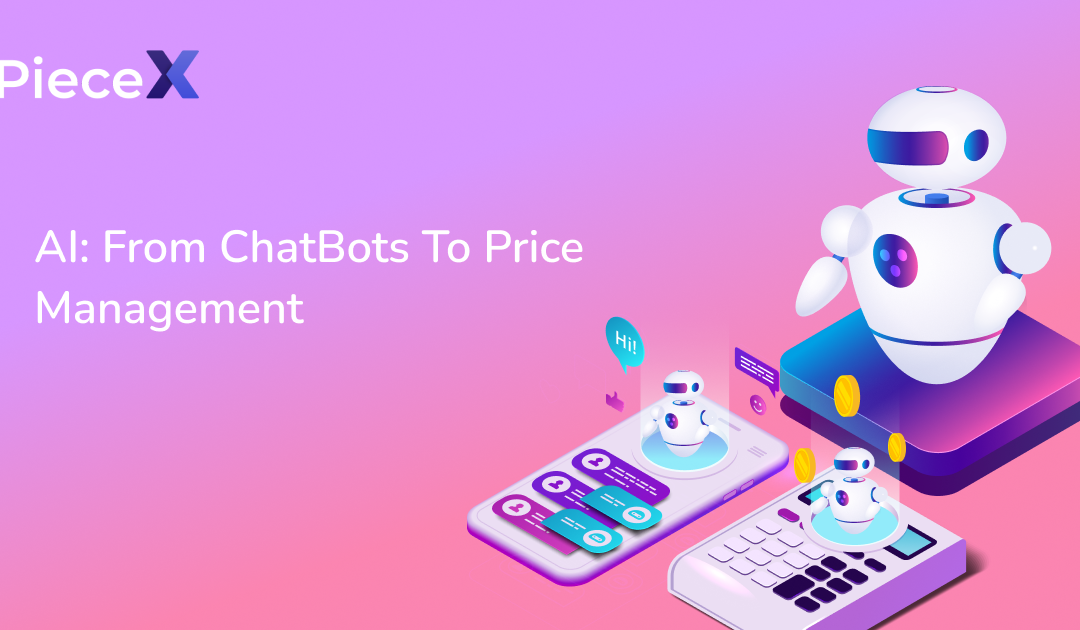

Artificial Intelligence (AI) is a technology that has changed many industries around the world. It helps businesses by making processes more efficient and improving customer experiences. In this article, we will explore two important ways AI is used: chat bots and price management. We will learn about their evolution, what they can do, and how they can benefit us in the future.
The Rise of Chat Bots
Chat bots such as ChatGPT are computer programs that can have conversations with people. They have become very popular in recent years, especially for customer service. Many companies, like those in e-commerce or banking, use chat bots to help their customers.
Chat bots can do many things. They can answer common questions, give real-time help, and guide users through processes. With AI, these bots can understand and respond to human language, making interactions feel more personal and human-like.
Advancements in Natural Language Processing (NLP)
One important part of chat bots is Natural Language Processing (NLP), which is a type of AI that focuses on how computers and humans communicate with each other. NLP has made chat bots even better by helping them understand and interpret what people say.
With NLP, chat bots can understand context, detect emotions, and find important information from what users say. They can have meaningful conversations and give accurate answers. This has made customer support faster and improved overall customer satisfaction.
Beyond Chat Bots: AI in Price Management
Price management is a big challenge for businesses. It’s hard to know the best prices for products because markets change and customers have different preferences. AI can help with this by providing new ways to optimize pricing strategies.
AI uses a lot of data to analyze market trends, what competitors are doing, and what customers want. By using AI-powered pricing models and algorithms, businesses can make smart decisions about how to price their products. This helps them adapt to changes in the market and make more money.
One example of AI in price management is PieceX, a marketplace for software and AI assets. PieceX uses AI to set prices in real-time based on demand and availability in its very own Dynamic Pricing. This helps businesses stay competitive and make more profit.
PieceX harnessed the power of AI algorithms to optimize the prices of its products, analyzing customer preferences and competitor strategies. By closely monitoring what customers desired and adjusting prices accordingly, PieceX successfully maintained competitiveness and drove increased profitability for all its Marketplace sellers. The outcome was a significant boost in sales and heightened customer interest, establishing PieceX as a prominent leader within its industry.
Through the implementation of Dynamic Pricing, PieceX experienced remarkable outcomes. By carefully observing customer demands and aligning pricing strategies accordingly, PieceX ensures its offerings remained compelling in a competitive market landscape. As a result, the company witnessed a substantial increase in sales volume and a surge in customer engagement. This success solidified PieceX’s reputation as an industry leader, earning recognition and trust from both customers and competitors alike.
Future Outlook
The future of AI in chat bots and price management looks promising. As technology improves, chat bots will become even better at helping customers and making interactions feel more human. AI will also continue to evolve in price management, helping businesses make better pricing decisions and be more successful.
However, there are challenges to consider. We need to make sure that AI is used ethically and that it respects people’s privacy. There is also more work to be done in developing AI that can understand complex emotions and context.
Conclusion
In conclusion, AI has changed how businesses interact with customers and manage prices. Chat bots with AI have made customer support faster and better. They can answer questions and help customers with problems. AI has also helped with price management by using data to make smart pricing decisions. This helps businesses adapt to changes in the market and make more money.
The future of AI in chat bots and price management is exciting. As technology improves, chat bots will become even more helpful and personalized. They will make customer experiences smoother and more enjoyable. AI will also continue to advance in price management, assisting businesses in setting optimal prices and maximizing their profits.
By embracing AI, businesses can enhance customer experiences, streamline operations, and stay competitive in a rapidly evolving market. It’s an exciting time for AI, and we can expect further innovations and opportunities in chat bots and price management as this technology continues to progress.
For more articles like this, make sure to check out our knowledgebase blog!
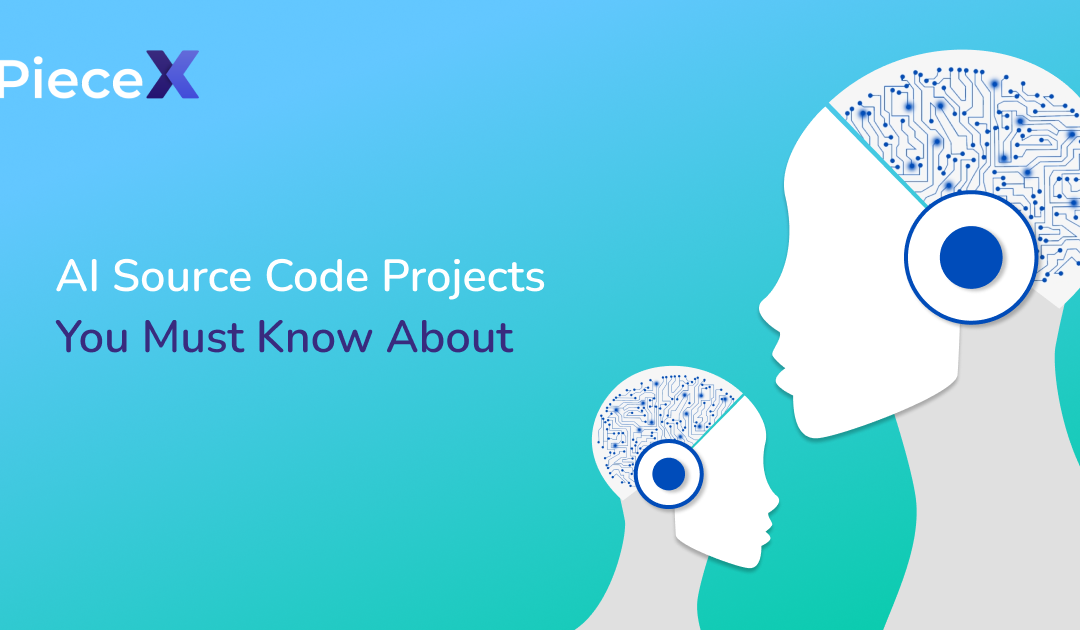
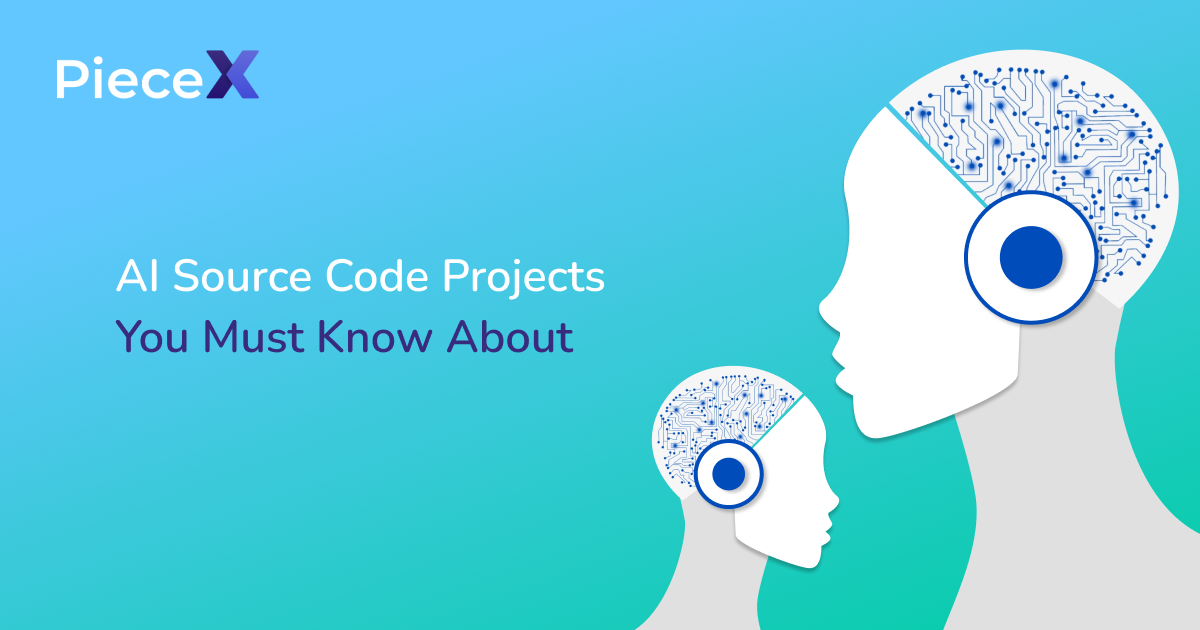
As the first marketplace for software source code to be powered by AI, PieceX has a great deal of knowledge in Artificial intelligence and has a magnitude of features all run by its patented AI.
With that, the PieceX Marketplace also has Artificial Intelligence source code, perfect for projects based on AI.
In this article, we will go through some of the AI source code projects in the PieceX Marketplace with high functionality including what exactly makes them unique.
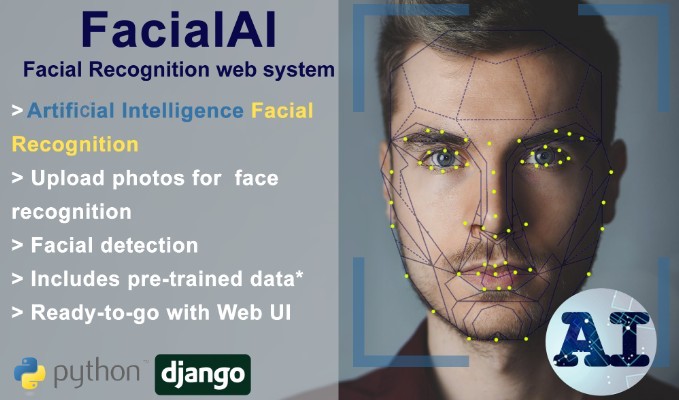
First off, one of the AI Source Code projects on PieceX is this AI Facial Recognition Web System. The best thing about it is that it is not only a facial recognition system but also has facial detection as a main feature.
While facial recognition gives an identification or a match between a set of images, facial detection allows identifying if there is a human face (or more) within a picture.
This source code is a ready-to-use code with User Interface for facial recognition and facial detection. Upload images and let the AI find matches for people in simple steps.
With this project, you will be able to upload single or multiple images to build a known faces library, find matches of multiple files simultaneously, submit images for facial detection, browse the results as a web client, access the database, and use the pre-trained data for other projects.
This source code is a complete Django framework solution including html templates, css, and js files. It includes a pre-trained model from public libraries and has undergone Python development with Django, the most popular AI programming language.
All those features and more make this source code an enterprise level solution, perfect for developmental use cases, security, business authorization and more.

Running major twitter accounts with thousands of responses? Trying to analyze a specific hashtag and understand the general feeling towards it? Figuring out which direction you should take and how to reach a specific audience?
With the AI Twitter Sentiment Analysis API, you will be able to distinguish the general sentiment and perform very complex analytical research using AI keeping track of how your clients are perceiving your website or brand and SNS marketing campaigns without having to hire a Data Analysis expert.
Sentiment analysis is an AI process from Natural Language processing aiming to identify positive, negative and neutral options from a text. It is a machine learning method of classification where the output is the polarity of the text which will allow us to classify it as positive, negative or neutral.
Best thing is you don’t even need a Python System, just host this API and call it from your preferred programming language as a RestFul API.
This product is an API that will analyze the text from a line of text or tweet, searching by hashtag or username within a range of dates, retrieving a Json response containing the polarity, classification of the sentiment (positive, negative, neural) and the subjectivity.
Additional functionality for getting Tweets by Username without a Twitter Developer Account*. You can repurpose it to analyze other sources of texts by editing the code.
This project is considered one of the good AI Source Code projects available on the marketplace due to its high functionality and possibilities.
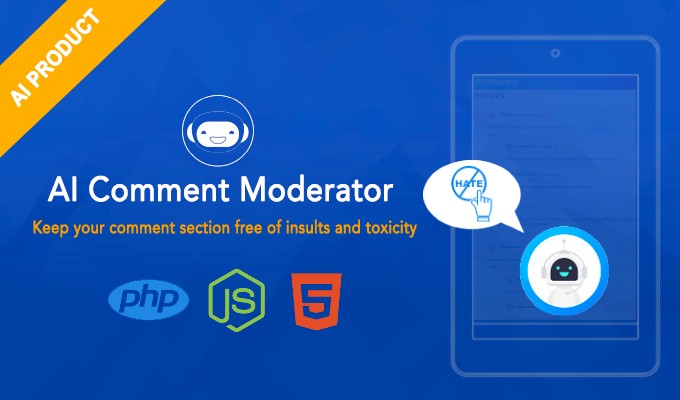
It is possible to hire a large team or social media/review moderators and manually look through thousands if not tens of thousands of comments and text left by users of your platform or fans of your social media pages.
Or instead, you could use the AI Source Code Project: AI Comment Moderator.
AI Comment Moderator will automatically block any insults before the content is uploaded into your database making sure that the comment section is free of insults, inappropriate language, and hate.
This AI source code project is very easy to deploy as you can just deploy it as any PHP Solution, which means it is fully web-based and does not need any special heavy AI Programming language or extension.
It is also highly customizable and is very easy to modify by non-AI developers as it includes a web-based design.
This AI source code project can log results and save the removed items in a log or database table. It also includes mock article pages and database structure.

DetectAI is an AI Source Code Project that uses a pre-trained model to localize and identify multiple objects in an image or in Real-Time with a web camera.
To Identify object detection, it is the task where a model can identify through an image or video stream, information about the objects inside the image and their position.
The current model detects the objects in images using a single deep neural network. The approach SSD (Single Shot MultiBox Detector), represent the output space of bounding boxes into a set of default boxes over different aspect ratios and scales per feature map location. The prediction generates scores for the presence of each object.
This AI source code project is fully developed in Javascript code, and so all you have to do is export results in a JSON file and integrate it easily with your applications.
It only needs a WebServer as it is fully web-based and needs minimal implementation requirements.
Additionally, using the same model, the option of object prediction via web camera is added to give more options to the user to perform the detections.
Conclusion
The PieceX Marketplace is filled with AI source code projects, all of which are pre-inspected by our QA specialists. Our team makes sure that all source code follows high standards and is equipped with a user guide to assist users with installation and implementation.
AI is currently revolutionizing markets everywhere, and the use of which can evolve your business and your tech massively in a short amount of time, which is why PieceX is adamant to include high quality AI Source code projects into its platform.
For more articles similar to this, make sure to check the PieceX Knowledgebase Blog.












